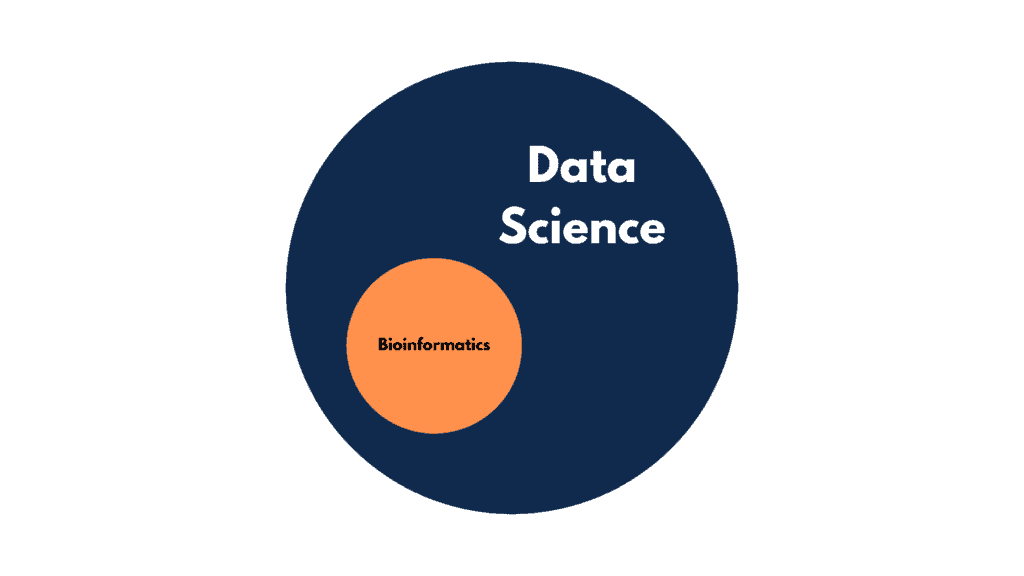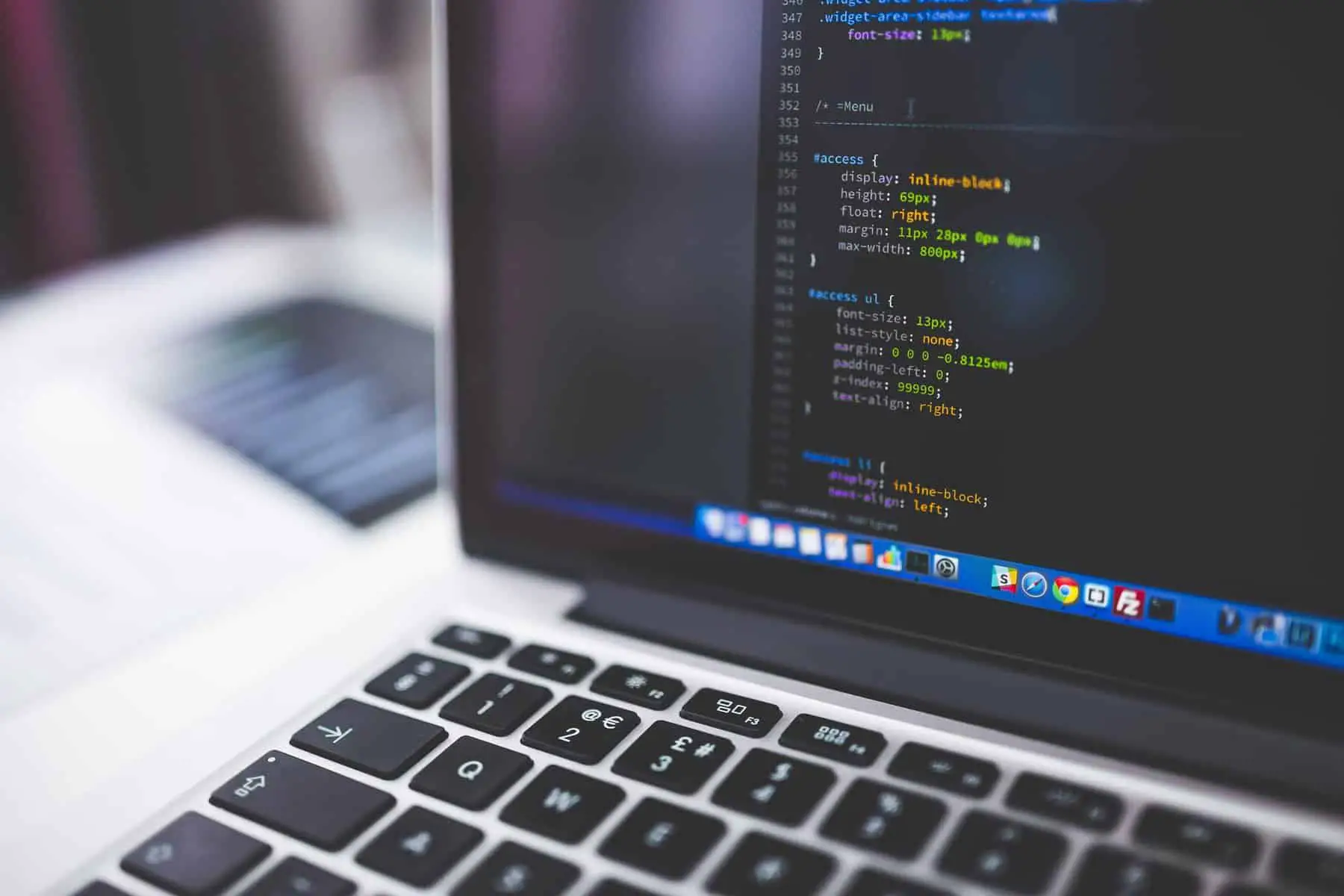This post may contain paid links to my personal recommendations that help to support the site!
The field of bioinformatics is a rather small one, with scientists working on biological data for insights. Having some background in bioinformatics myself, this questions came across my head – can bioinformatics be considered as part of data science? Where would bioinformatics be if it were not? That’s why I’m here today to clearly explain all the similarities and differences. Here’s the short answer:
Bioinformatics is a data science. Bioinformatics belongs under the larger field of data science. Bioinformatics involves biological data analysis to capture biological insight and it uses cross-disciplinary concepts from mathematics and computing, which is similar to data science.
What is Bioinformatics?

Bioinformatics is a specialized field involving the combination of biological, mathematical and computational concepts to help uncover biological discoveries. The field can be easily split into two main areas: The development of information systems and tools for computing biological data as well as the analysis of data for biological interpretations and applications.
In general, I would further put bioinformatics into several categories based on their applications. These would include the following:
- Population Genomics
- Computational Biology
- Drug Design & Discovery
- Genotype Analysis
- Phylogenetic Data Analysis
Now that sounds quite exciting, doesn’t it? It is essentially an inter-disciplinary field, where computational methods are applied to give biological meaning. During my recent conversations with some bioinformaticians, I came across more similarities between the analysis pipelines of bioinformaticians and data scientists.
Now, how does all of this actually allow bioinformatics to be considered as part of data science? Let’s revisit what does data science actually include.
What does Data Science include?

In my opinion, data science includes any field of study that involves the use of fields in statistics, computing and mathematics to solve problems. Keep in mind that this is just how I would view it but everyone’s view of data science is different. Being such a new field, one should expect that these definitions are slightly varied from one to another.
Data science includes the concepts of exploratory data analysis, followed by machine learning and ultimately some data model product engineering. These are just some broad aspects of work data that scientists with business focus work on.
However, the main concept of data science should have some form of mathematical or statistical analysis of data to bring about value. Do things start to sound familiar to you yet? In many ways, one can draw many similarities between the bioinformatics and data science field.
Here’s a simple diagram to illustrate how bioinformatics can fit into the larger data science field of work.

How is Bioinformatics Similar to Data Science?
1. Both Require Handling of Large Amounts of Data

The work of a bioinformatician is very much data-heavy. In fact, biological data is one of the most complex, and is part of big data. Genomic datasets (your DNA sequences) are huge – a single gram of DNA could up to 455 exabytes (that’s 455 with 20 zeroes behind) of data!
Data Scientist handle a variation of data. In a business setting, a data scientist can be dealing with financial data as well as marketing data. With these few sources combined, a large database can be made for analysis.
Both jobs require sufficient data to provide better training of models, which leads to the requirements of having large datasets to analyze.
2. Both Involves the Use of Data Analysis Tools for Insight

Commonly used among bioinformaticians as well as data scientists, the programming languages such as Python and R are staples in both job functions.
Bioinformations typically use packages within R to access tools specifically designed for processing and visualizing biological datasets. They use packages like Biopython for analysis as well. Data Scientists tend to use a combination of Python and R as well. Python is used for its versatility and R is used for its powerful visualization packages.
Now, this should come as no surprise to us at this point, since these two languages allow versatile cleaning, processing and modelling of data.
3. Both Require the Interpretation and Evaluation of Models
To give biological insight, models can be made by bioinformatics to better predict the interactions between biological systems. Data Scientists, in a similar manner, do have to create models for financial predictions as well as clustering models in marketing applications.
| 1. Handling Large Amounts of Data | |||
| 2. Use of Data Analysis tools | |||
| 3. Requires Interpretation of Models |
How is Bioinformatics Different from Data Science?
1. Depth of Specialty
Bioinformatics can be described as a domain-specific study of biology using data science approaches. This means that it is a more specialized and focused field than that of data science.
Data Science is not limited to a certain domain of study and includes a broader spectrum of applications that need the use of data interpretation.
2. Skillsets

Among the bioinformaticians that I know of, most would need additional skills in Bash Terminal as well as Linux for biological data. In some cases, older software such as SPSS and Perl are used for similar purposes. These skills are rarely used among general data scientists, due to their overly specific use cases.
Data Scientists, on the other hand, use a varied set of data tools to work at their data. Primarily using Python for their powerful machine learning libraries, data scientist may also employ proprietary software for data visualization when presenting their model findings to business stakeholders.
3. Job Function

Bioinformatics is a primarily research-based field, where most of the bioinformatics lie within academia. Due to the highly-specialized skillsets and domain knowledge, bioinformaticians are rarely included in analysis for business function.
Data science is a general field where skillsets can vary from one company to another, but mostly within the business setting. A data scientist may also be working at an academic institute, but need not be limited to those options.
| Depth of Specialty | Skillsets | Job Function | |
| Bioinformatics | Specialized | R, Bash, Python | Academia Research |
| Data Science | General | Python, Tableau | Business-focused |
Related Questions
Which Field has Higher Barrier to Entry?
Bioinformatics would have the higher barrier due to it’s focus on a specialization and biology domain knowledge. Although both fields would generally require a Doctor of Philosphy (PhD), a job in data science only requires a quantitative background and not a biological one.
Can You Transition from a Bioinformatician to a Data Scientist?
You must be thinking right now: can I, as a bioinformatician, make my transition to data science? I would say that is a yes. In many ways, bioinformaticians work on data using the same methodologies and pipelines as data scientists. In fact, the skills you possess as a bioinformatician are highly transferrable and many others have made the transition too!
However, an area of caution for those who are switching over is that unlike the academia work style of independent research, data science in a business very much relies on constant collaboration and communication with stakeholders. If that is fine with you then you are good to go!
Conclusion
We have compared the difference in their definitions and looked at how their respective job positions differ from each other. We also looked at how much similarities they have in common.
Therefore we can now conclude that bioinformatics is a highly-specialized field that belongs under the larger data science category of work. Bioinformatics is a subset of data science and they are not mutually exclusive of each other.
My Favorite Learning Resources:
My Recommended Learning Platforms!
| Learning Platform | What’s Good About the Platform? | |
|---|---|---|
| 1 | Coursera | Certificates are offered by popular learning institutes and companies like Google & IBM |
| 2 | DataCamp | Comes with an integrated coding platform, great for beginners! |
| 3 | Pluralsight | Strong focus on data skills, taught by industry experts |
| 4 | Stratascratch | Learn faster by doing real interview coding practices for data science |
| 5 | Udacity | High-quality, comprehensive courses |
My Recommended Online Courses + Books!
| Topic | Online Courses | Books | |
|---|---|---|---|
| 1 | Data Analytics | Google Data Analytics Professional Certificate | – |
| 2 | Data Science | IBM Data Science Professional Certificate | – |
| 3 | Excel | Excel Skills for Business Specialization | – |
| 4 | Python | Python for Everybody Specialization | Python for Data Analysis |
| 5 | SQL | Introduction to SQL | SQL: The Ultimate Beginners Guide: Learn SQL Today |
| 6 | Tableau | Data Visualization with Tableau | Practical Tableau |
| 7 | Power BI | Getting Started with Power BI Desktop | Beginning Microsoft Power BI |
| 8 | R Programming | Data Science: Foundations using R Specialization | Learning R |
| 9 | Data Visualization | – | Big Book of Dashboards |
